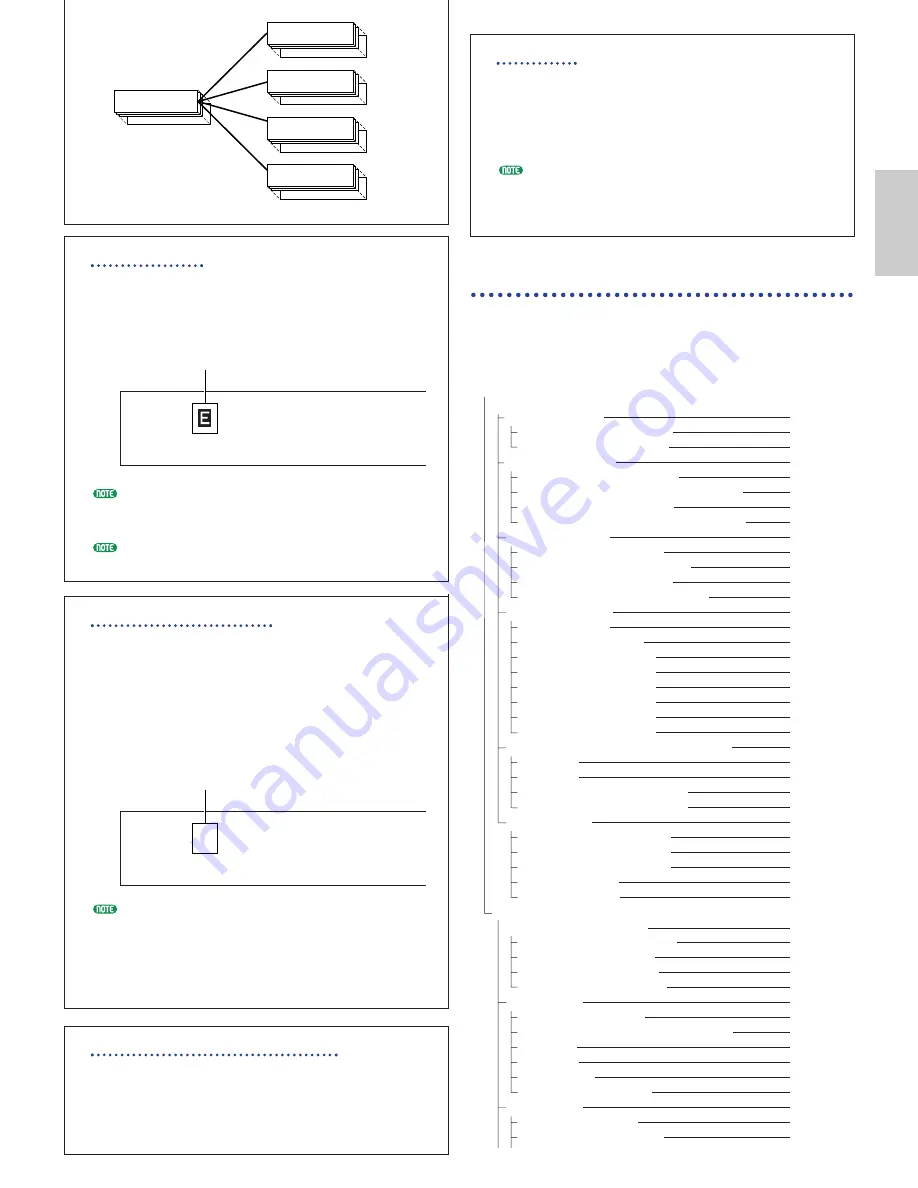
69
Voice Mode
The
í
Indicator
If you alter any parameters in Voice Edit Mode, the
í
indicator will be displayed in the top left of the
screen. This gives a quick indication that the
current voice has been modified but not yet stored.
Even if you exit to Voice Play Mode, the edited
settings for the current Voice will not be lost so long
as you do not select another Voice.
The
í
indicator will also be displayed in Voice Play
Mode, and if any Assignable knobs are used.
The “Compare” Function
Use this to listen to the difference between the Voice with
your edited settings and the same Voice prior to editing.
1
Press the [COMPARE (EDIT)] key while in Voice
Edit Mode. The
í
indicator at the top left of the
screen will change to the
î
indicator and the Voice
settings prior to editing will temporarily be
reinstated for comparison purposes.
While the “Compare” function is enabled, editing will
not be possible using knobs [A] to [C] or knob [1]/[2].
2
Press the [EDIT] key again to disable the
“Compare” function and restore the settings for
your edited Voice.
The ELEMENT ON/OFF Function
Use this to mute individual Elements within a Voice.
For example, you could mute all Elements other
than that which you are editing. Thus, you can
hear how the edited settings affect just that
Element. Details are given on Page 51.
GENîName) Ctgry
Compare indicator
GEN Name) Ctgry
Edit indicator
COMMON
Element1
Element2
Element3
Element4
Voice Store
The edited settings for the current Voice will be lost
if you select another Voice or Mode. To avoid losing
important data, you should always use Voice Store
to store your edited Voice. Details about the Voice
Store procedure are given on Page 106.
When creating a new Voice from scratch, it can be
useful, prior to editing, to clear the settings for the
current Voice using the Initialize Voice function in
Voice Job Mode (Page 105).
Normal Voice
When editing Normal Voices, there are 12 settings
consisting of six Common Edit settings (common to all
four Elements) and six Element-specific settings.
Voice Edit Mode
Common
Common General
70
GEN Name (General Name)
70
GEN Other (General Other)
71
Common Quick Edit
71
QED Level (Quick Edit Level)
71
QED EffectCtrl (Quick Edit Effect Control)
71
QED Filter (Quick Edit Filter)
72
QED EG (Quick Edit Envelope Generator)
72
Common Arpeggio
72
ARP Type (Arpeggio Type)
72
ARP Limit (Arpeggio Note Limit)
73
ARP Mode (Arpeggio Mode)
73
ARP PlayEF (Arpeggio Play Effect)
73
Common Controller
74
CTL Portamento
74
CTL Bend (Pitch Bend)
74
CTL Set1 (Control Set 1)
74
CTL Set2 (Control Set 2)
74
CTL Set3 (Control Set 3)
74
CTL Set4 (Control Set 4)
74
CTL Set5 (Control Set 5)
74
CTL Set6 (Control Set 6)
74
Common LFO (Low Frequency Oscillator)
75
LFO Wave
75
LFO Fade
77
LFO Dest1 (LFO Destination 1)
77
LFO Dest2 (LFO Destination 2)
77
Common Effect
78
EFF InsEF (Insertion Effect)
78
EFF EF1 (Insertion Effect 1)
78
EFF EF2 (Insertion Effect 2)
78
EFF Rev (Reverb)
79
EFF Cho (Chorus)
79
Element
Element OSC (Oscillator)
79
OSC Wave (Oscillator Wave)
79
OSC Out (Oscillator Out)
79
OSC Pan (Oscillator Pan)
80
OSC Limit (Oscillator Limit)
80
Element Pitch
80
PCH Tune (Pitch Tune)
80
PEG VelSens (PEG Velocity Sensitivity)
81
PEG Time
81
PEG Level
81
PEG Release
81
PCH Scale (Pitch Scale)
82
Element Filter
83
FLT Type (Filter Type)
83
FLT HPF (High Pass Filter)
85






























